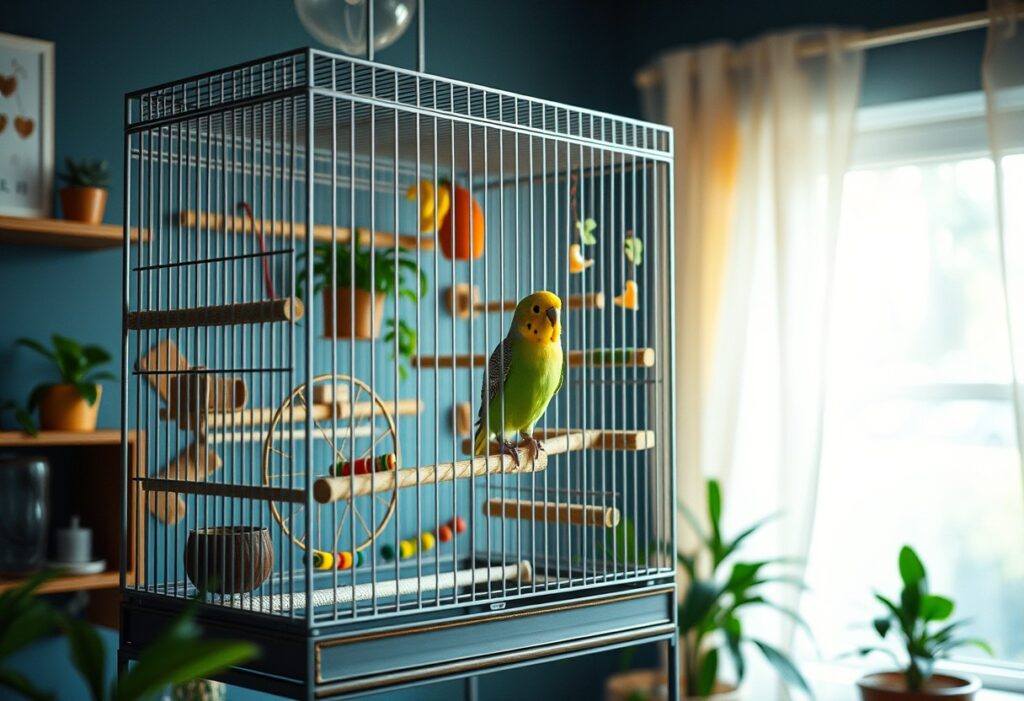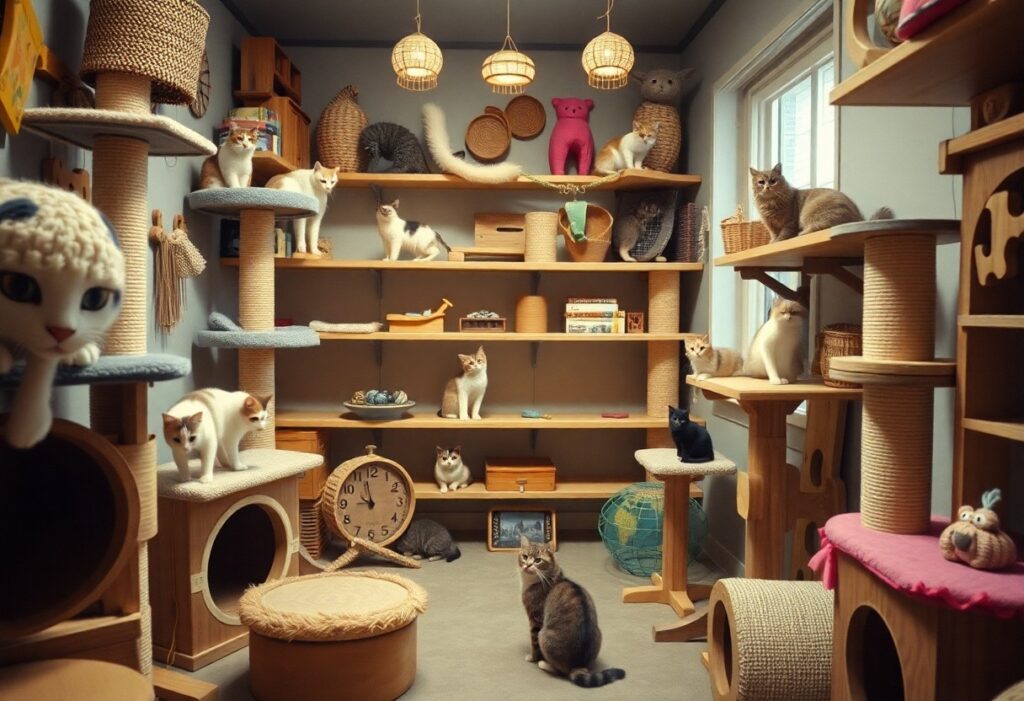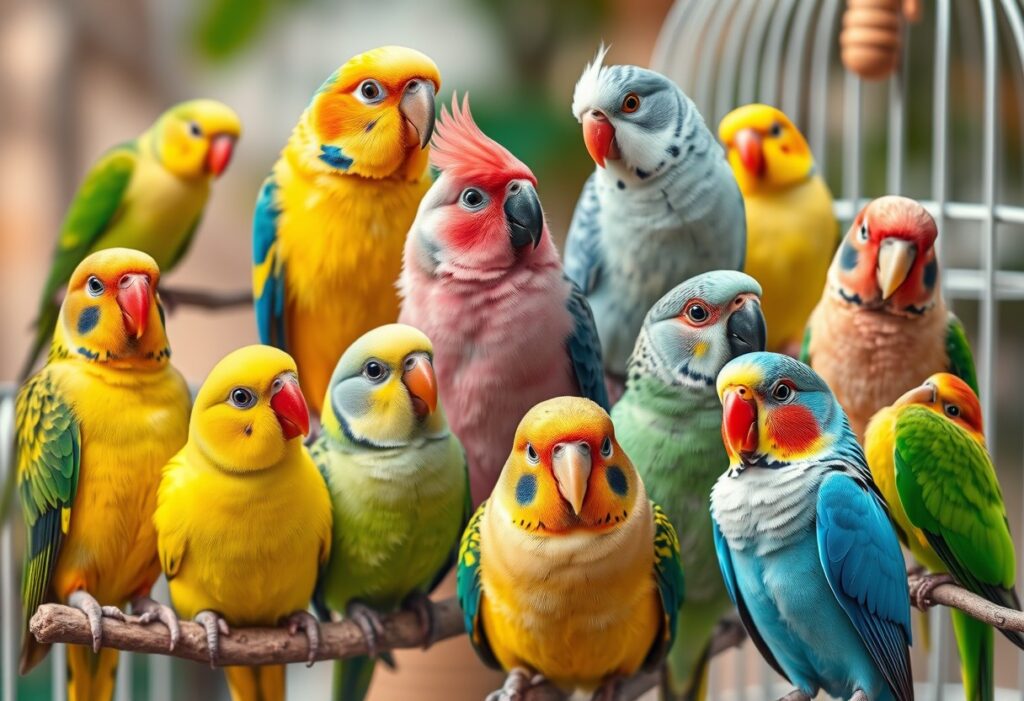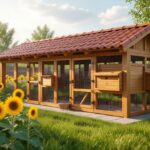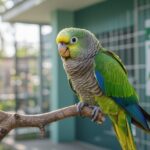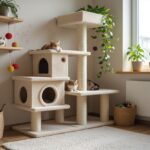Many pet bird owners underestimate the significance of choosing the right cage for their feathered friends. The cage serves not only as a safe haven for your bird but also plays a crucial role in their health and welfare. In this guide, you will learn how to assess size, material, and placement to ensure your bird is comfortable and stimulated in their environment. With the right cage, you can provide your pet with a happy, secure home, enabling them to thrive and live a long, vibrant life.

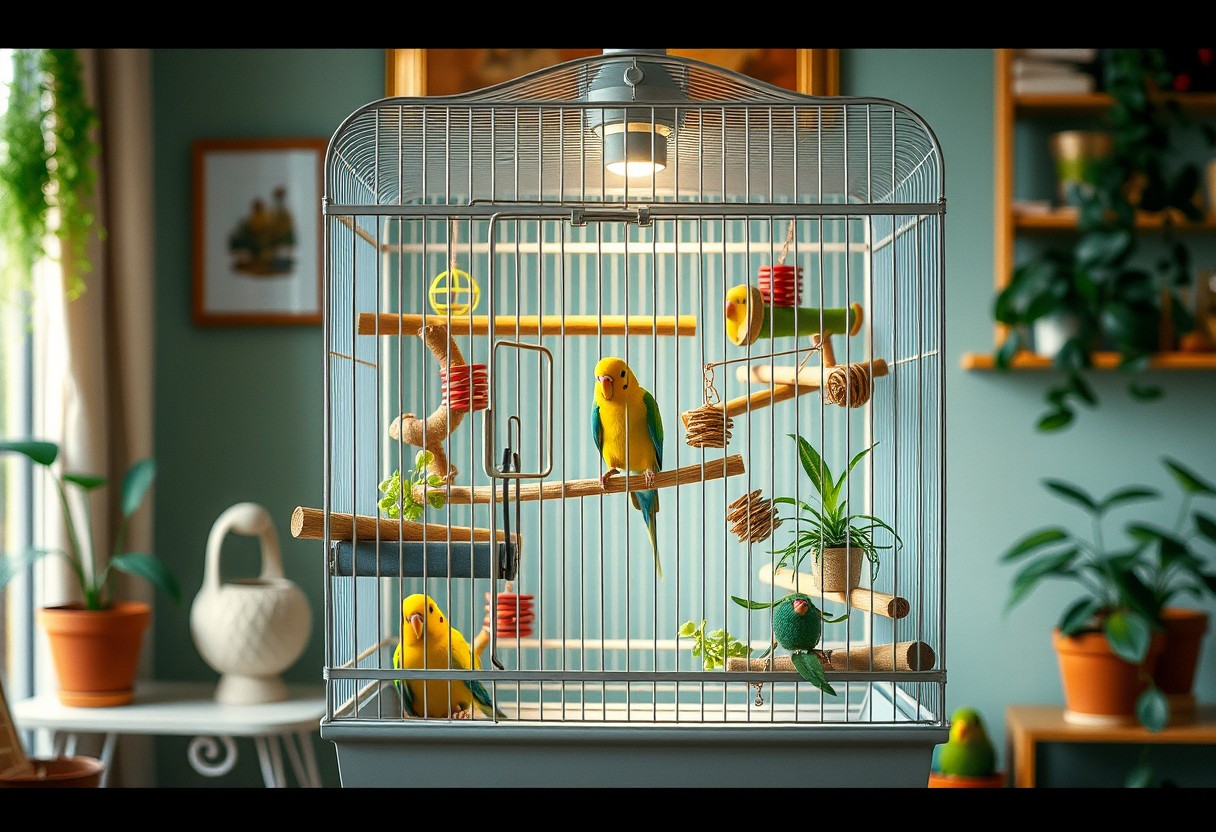
Understanding Your Pet Bird’s Needs
To choose the right cage for your pet bird, it is imperative to first understand their unique needs. Each bird species has its own set of preferences and characteristics, which play a significant role in selecting the appropriate habitat. By recognizing what your bird requires, you can create an environment that fosters their well-being and happiness.
Size Considerations
With the right cage size, your bird will have enough space to move about comfortably. A cage that is too small can lead to physical and mental health issues, such as stress or feather plucking. As a rule of thumb, the larger the cage, the better, as it will allow your bird to stretch, fly short distances, and explore their surroundings. Consider the wingspan and size of your bird when determining the minimum cage dimensions.
Additionally, make sure to take into account the number of perches and toys that you plan to include in the cage. These elements require space as well. It’s critical to provide your pet with an environment where they feel secure yet have ample room for exploration and play.
Species-Specific Requirements
The type of bird you have also dictates certain cage specifications. Various bird species have distinct traits that warrant different cage designs. For instance, small birds like finches can thrive in smaller, taller cages, whereas larger birds such as parrots need wider, more spacious homes to accommodate their size and activity levels.
It is imperative to research the specific needs of your bird species, as some may require specialized features such as horizontal bars for climbing or specific perch types. Understanding these species-specific requirements ensures that your bird enjoys a fulfilling life in their cage.
Activity Level and Space
There’s a strong correlation between your bird’s activity level and the amount of space you provide. Highly active birds, such as parakeets or cockatiels, need larger cages that allow for sufficient movement and playtime. Birds that are more sedentary may be fine in a more compact setup, but they still require adequate stimulation to prevent boredom and associated behavioral issues.
Space becomes a critical factor in creating an enriching environment for your bird. Make sure that the cage is not only big enough for your bird to fly around comfortably but also allows for the addition of toys, perches, and other items that can keep them engaged.
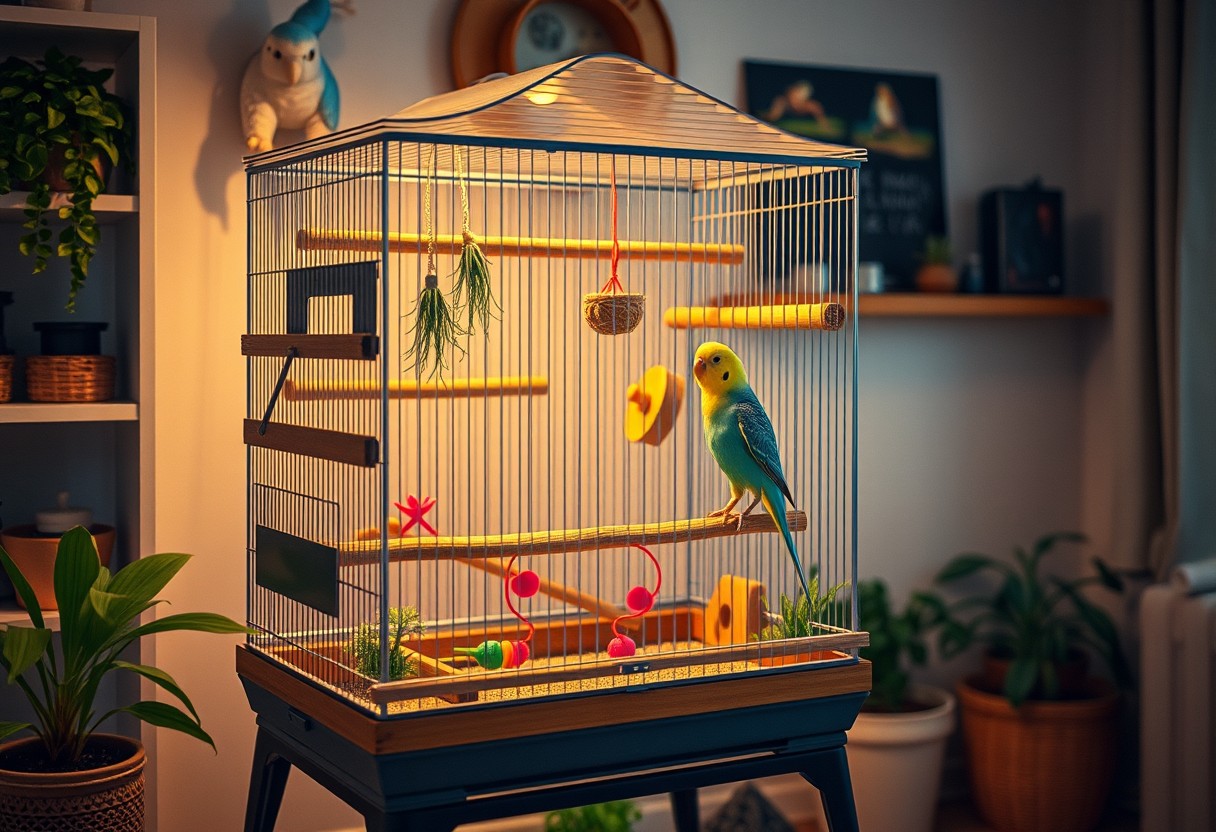
Factors to Consider When Choosing a Cage
There’s a lot to consider when selecting the perfect cage for your pet bird. The right cage can ensure a safe and comfortable environment for your feathered companion. Here are some key factors to keep in mind:
- Material and Durability
- Bar Spacing and Safety
- Accessibility and Entry Points
Material and Durability
To ensure your bird’s well-being, you’ll want to choose a cage made from durable materials that can withstand daily wear and tear. Stainless steel is often considered the best material due to its non-toxic properties and resistance to rust and corrosion. Powder-coated metal is another popular choice, as it offers a non-toxic finish and ample protection against chipping, ensuring a longer lifespan for your cage. It’s crucial to avoid cages made from plastic or inferior metals, as they can be easily chewed through or release harmful toxins.
Additionally, inspect the construction quality of the cage. Ensure it has solid welds and no sharp edges that could potentially harm your bird. A sturdy cage will not only provide a safe haven for your pet but will also save you money in the long run, requiring fewer replacements.
Bar Spacing and Safety
There’s no denying that bar spacing can be a critical aspect of your bird’s safety and comfort. The spacing between the bars should be appropriate for the species of bird you have. For smaller birds, such as finches or budgerigars, 1/2 inch spacing is generally recommended, whereas larger birds, like cockatoos or macaws, might require spacing of up to 1 inch. Too wide bar spacing can lead to injuries or escape.
The importance of selecting the right bar spacing cannot be overstated. Choosing a cage with too much space between the bars can result in your pet getting stuck, leading to potential injury or stress. Regularly check the bars and ensure they are appropriately spaced to maintain a secure habitat for your feathered friend.
Accessibility and Entry Points
On top of ensuring safety through bar spacing, you’ll want a cage that offers easy accessibility and multiple entry points. Look for cages that have large doors that open wide, allowing you to easily reach inside to clean the cage or handle your bird. Additionally, side doors can make it more convenient to access food and water dishes without causing disturbance to your pet.
Accessibility is key in building trust with your bird. If your feathered friend feels stressed when you are trying to handle them, it may lead to an aversion to the cage. A well-designed cage with ample entry points will not only make your routine easier but also create a more inviting space for your pet.
Plus, a cage that is easy to access can greatly simplify cleaning and maintenance. Birds can be messy, and quick access points help you keep the environment tidy, contributing to the overall well-being of your pet. Perceiving these factors will guide you in selecting the perfect cage that meets both your needs and your budgie’s preferences.
Tips for Selecting the Right Cage
Despite the numerous options available for pet bird cages, selecting the right one can be overwhelming. To simplify your decision-making process, consider the following tips:
- Assess your bird’s size: Ensure the cage is spacious enough for your pet to move around comfortably.
- Look for appropriate bar spacing to prevent escapes or injuries.
- Choose a cage that complements your home décor, as it will be a focal point in your living space.
- Consider cages made from non-toxic materials to keep your feathered friend safe.
- Evaluate the cage design, ensuring it has features like removable trays for easy cleaning.
Assume that these tips will help you narrow down your options effectively, ultimately leading to a happy and healthy environment for your bird.
Budgeting for Your Bird’s Home
Now that you have a clearer understanding surrounding the choice of your bird’s cage, budgeting is a crucial aspect to consider. Pet bird cages come in a wide range of prices depending on size, material, and brand. Establish your budget early on so you can explore options without overspending. It’s crucial to strike a balance between a durable cage that features necessary safety and comfort elements and one that fits your financial capacity.
Moreover, remember that the initial cost of the cage is just one part of your investment. Factor in your long-term costs like accessories, toys, and maintenance, which can add to your overall expense. Understand that investing in a quality cage can save you money over time by reducing the need for replacements and ensuring your bird’s well-being.
Choosing the Right Accessories
With a variety of accessories available for pet birds, selecting the right ones can enhance your bird’s overall habitat. Consider items such as perches, toys, and food/water dishes that cater specifically to your bird’s species and personality. Look for accessories that provide mental and physical stimulation, ensuring your pet remains active and engaged.
Right accessories not only add functionality to your bird’s home but also increase its aesthetic appeal. Choose vibrant and interactive toys that are safe and made from non-toxic materials. Additionally, different types of perches like natural wood or varying diameters can offer your bird much-needed variety and exercise opportunities.
Maintenance and Cleaning
Now that you’ve put in the effort to choose the perfect cage and accessories for your pet bird, don’t overlook the importance of maintenance and cleaning. A clean environment is crucial to your bird’s health and happiness. Regularly clean the cage using safe, non-toxic cleaning supplies, and be sure to follow any manufacturer instructions regarding cage care. This will prevent the buildup of dirt and harmful bacteria that can affect your pet’s well-being.
Additionally, routine maintenance checks should be conducted to ensure that all parts of the cage are functioning appropriately. Regularly inspect for any signs of wear and tear, ensuring that your bird’s home remains safe and comfortable. Selecting the right cleaning routine will contribute significantly to a long-lasting and healthy cage environment for your cherished pet.
Summing up
Considering all points, choosing the perfect cage for your pet bird is a crucial step towards ensuring its well-being and happiness. You should assess the size and dimensions of the cage to accommodate your bird’s species and its natural behaviors, ensuring it has ample space to move, fly, and explore. Additionally, consider the materials and bar spacing, as these factors can significantly impact your bird’s safety. Don’t forget to provide enrichment items such as perches, toys, and feeding stations within the cage to create a stimulating environment for your feathered friend.
Furthermore, remember that a proper cage is not only about dimensions and materials; it should also be situated in a suitable location within your home. Ensure the cage is away from drafts, direct sunlight, and potential hazards while allowing you to interact with your bird comfortably. By taking these considerations into account, you can effectively select a cage that promotes your bird’s health and happiness, leading to a more fulfilling companionship for both you and your avian friend.
Q: What size cage should I choose for my pet bird?
A: The size of the cage you select will largely depend on the species and size of your bird. Generally, the larger the bird, the larger the cage required. As a rule of thumb, the cage should be at least two times the wingspan of your bird in width and height. For smaller birds like budgies or finches, a cage that offers plenty of horizontal space is beneficial, while larger birds like parrots will require a spacious cage to accommodate their strength and energy levels. It’s imperative for birds to have room to move, spread their wings, and exercise. Also, consider providing multiple perches and toys within the cage to promote physical activity and mental stimulation.
Q: What materials should I look for in a bird cage?
A: The material of your bird’s cage is crucial for both their safety and longevity. Ideally, you want a cage made from non-toxic materials that are easy to clean and resistant to rust. Stainless steel and powder-coated metal are excellent choices as they are durable and non-toxic. Avoid cages with painted surfaces unless they’re advertised as bird-safe. The spacing between the bars is also important—make sure it’s not too wide so your bird can’t escape or get stuck. A good rule of thumb is to have bar spacing that is appropriate for your bird size; for example, smaller birds require narrower spacing compared to larger species.
Q: How do I ensure the cage environment is suitable for my bird’s wellbeing?
A: To create a suitable environment in your bird’s cage, it’s imperative to focus on practices that promote their physical health and mental wellbeing. First, make sure to include perches of varying sizes and textures to encourage foot health and allow for natural behaviors. Incorporate toys, both for play and for chewing, to stimulate your bird mentally. Additionally, choose a location for the cage that is not in direct sunlight or drafty areas, as changes in temperature can be detrimental to their health. Routine cleaning of the cage is vital to avoid bacteria build-up; fresh water and food should be provided daily. Lastly, consider adding natural elements like safe plants inside the cage (if appropriate for your bird) to mimic their natural habitat and keep their environment enriching.
